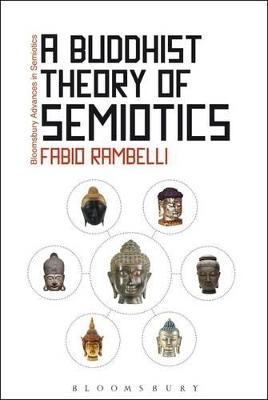
A Buddhist Theory of Semiotics
Signs, Ontology, and Salvation in Japanese Esoteric Buddhism
Seiten
2013
Bloomsbury Academic USA (Verlag)
978-1-4411-7777-3 (ISBN)
Bloomsbury Academic USA (Verlag)
978-1-4411-7777-3 (ISBN)
One of the first attempts ever to present in a systematic way a non-western semiotic system. This book looks at Japanese esoteric Buddhism and is based around original texts, informed by explicit and rigorous semiotic categories. It is a unique introduction to important aspects of the thought and rituals of the Japanese Shingon tradition.
Semiotic concerns are deeply ingrained in the Buddhist intellectual and religious discourse, beginning with the idea that the world is not what it appears to be, which calls for a more accurate understanding of the self and reality. This in turn results in sustained discussions on the status of language and representations, and on the possibility and methods to know reality beyond delusion; such peculiar knowledge is explicitly defined as enlightenment. Thus, for Buddhism, semiotics is directly relevant to salvation; this is a key point that is often ignored even by Buddhologists. This book discusses in depth the main elements of Buddhist semiotics as based primarily on original Japanese pre-modern sources. It is a crucial publication in the fields of semiotics and religious studies.
Semiotic concerns are deeply ingrained in the Buddhist intellectual and religious discourse, beginning with the idea that the world is not what it appears to be, which calls for a more accurate understanding of the self and reality. This in turn results in sustained discussions on the status of language and representations, and on the possibility and methods to know reality beyond delusion; such peculiar knowledge is explicitly defined as enlightenment. Thus, for Buddhism, semiotics is directly relevant to salvation; this is a key point that is often ignored even by Buddhologists. This book discusses in depth the main elements of Buddhist semiotics as based primarily on original Japanese pre-modern sources. It is a crucial publication in the fields of semiotics and religious studies.
Fabio Rambelli is Professor and International Shinto Foundation Chair of Shinto Studies, Department of East Asian Languages and Cultural Studies, and Department of Religious Studies, University of California, Santa Barbara, USA.
Preface: Semiotics and Buddhism
1. The Episteme of Japanese Esoteric Buddhism
2. Semiotics and Ontology: A Pansemiotic Universe
3. Mantra and Siddham: Esoteric Linguistics and Grammatology
4. The Semantic System of Esoteric Buddhism
5. Mandala and the Representation of Reality
6. Semiotic Soteriology
7. Conclusion: Buddhist Semiurgy
Bibliography
Index
| Erscheint lt. Verlag | 14.3.2013 |
|---|---|
| Reihe/Serie | Bloomsbury Advances in Semiotics |
| Verlagsort | New York |
| Sprache | englisch |
| Maße | 156 x 234 mm |
| Gewicht | 572 g |
| Themenwelt | Sachbuch/Ratgeber ► Gesundheit / Leben / Psychologie ► Esoterik / Spiritualität |
| Geisteswissenschaften ► Philosophie ► Erkenntnistheorie / Wissenschaftstheorie | |
| Geisteswissenschaften ► Religion / Theologie ► Buddhismus | |
| Geisteswissenschaften ► Religion / Theologie ► Weitere Religionen | |
| Sozialwissenschaften | |
| ISBN-10 | 1-4411-7777-9 / 1441177779 |
| ISBN-13 | 978-1-4411-7777-3 / 9781441177773 |
| Zustand | Neuware |
| Haben Sie eine Frage zum Produkt? |
Mehr entdecken
aus dem Bereich
aus dem Bereich
Neue medizinische Fakten zur Nahtoderfahrung
Buch | Softcover (2023)
Patmos Verlag
22,00 €
mit einem Geleitwort von Elke Heidenreich
Buch | Hardcover (2024)
Kösel (Verlag)
30,00 €


